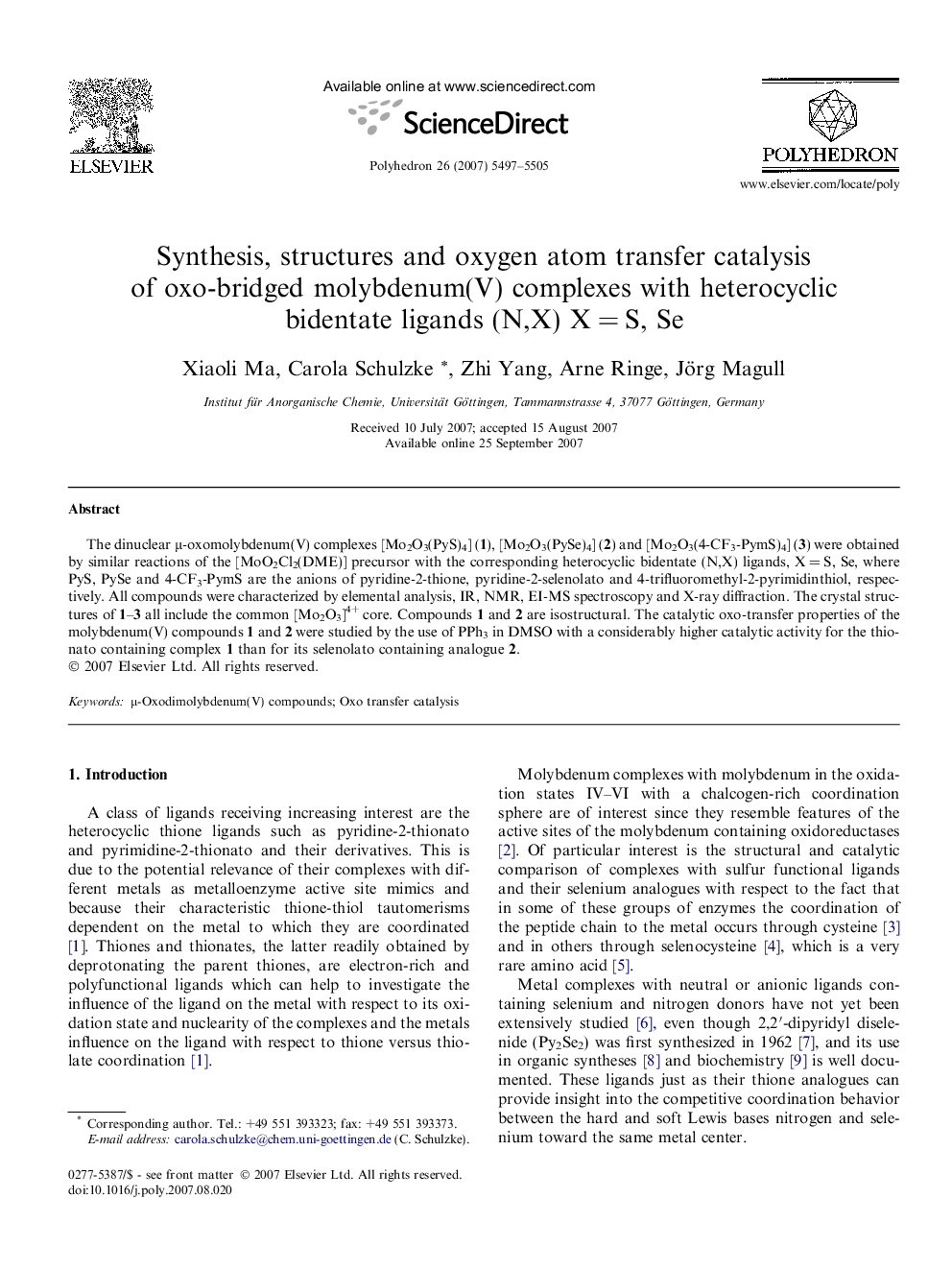| Article ID | Journal | Published Year | Pages | File Type |
|---|---|---|---|---|
| 1335383 | Polyhedron | 2007 | 9 Pages |
The dinuclear μ-oxomolybdenum(V) complexes [Mo2O3(PyS)4] (1), [Mo2O3(PySe)4] (2) and [Mo2O3(4-CF3-PymS)4] (3) were obtained by similar reactions of the [MoO2Cl2(DME)] precursor with the corresponding heterocyclic bidentate (N,X) ligands, X = S, Se, where PyS, PySe and 4-CF3-PymS are the anions of pyridine-2-thione, pyridine-2-selenolato and 4-trifluoromethyl-2-pyrimidinthiol, respectively. All compounds were characterized by elemental analysis, IR, NMR, EI-MS spectroscopy and X-ray diffraction. The crystal structures of 1–3 all include the common [Mo2O3]4+ core. Compounds 1 and 2 are isostructural. The catalytic oxo-transfer properties of the molybdenum(V) compounds 1 and 2 were studied by the use of PPh3 in DMSO with a considerably higher catalytic activity for the thionato containing complex 1 than for its selenolato containing analogue 2.
Graphical abstractThe first μ-oxomolybdenum(V) pyridine-2-selenolato complex [Mo2O3(PySe)4] and its pyridine-2-thionato analogue [Mo2O3(PyS)4] as well as [Mo2O3(4-CF3-PymS)4] were synthesized and structurally characterized. The oxygen atom transfer properties of the selenium and the corresponding sulfur compound are compared.Figure optionsDownload full-size imageDownload as PowerPoint slide
